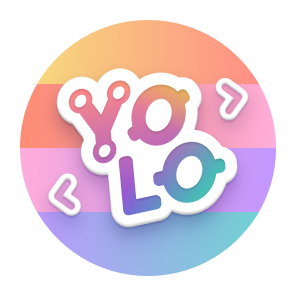Welcome to HomeSpan - a robust and extremely easy-to-use Arduino library for creating your own ESP32-based HomeKit devices entirely within the Arduino IDE.
HomeSpan provides a microcontroller-focused implementation of Apple's HomeKit Accessory Protocol Specification Release R2 (HAP-R2) designed specifically for the Espressif ESP32 microcontroller running within the Arduino IDE. HomeSpan pairs directly to HomeKit via your home WiFi network without the need for any external bridges or components. With HomeSpan you can use the full power of the ESP32's I/O functionality to create custom control software and/or hardware to automatically operate external devices from the Home App on your iPhone, iPad, or Mac, or with Siri.
Requirements to run HomeSpan depend on which version you choose:
| HomeSpan Version | Arduino-ESP32 Board Manager | Partition Scheme | Supported Chips |
|---|---|---|---|
| 1.9.1 or earlier | v2.0.0 - v2.0.17 | Default (1.3MB APP) | ESP32, S2, S3, C3 |
| 2.0.0 or later | v3.0.2 - v3.2.0* | Minimal SPIFFS (1.9MB APP) | ESP32, S2, S3, C3, and C6 |
*HomeSpan has been tested through version 3.2.0 of the Arduino-ESP32 Board Manager (built on IDF 5.4.1). Later releases may work fine, but have not (yet) been tested. Note HomeSpan does not support the use of alpha, beta, or pre-release candidates of the Arduino-ESP32 Board Manager - testing is only done on production releases of the Board Manager.
ADDITIONAL REQUIREMENTS: Apple's HomeKit architecture requires the use of a Home Hub (either a HomePod or Apple TV) for full and proper operation of any HomeKit device, including those based on HomeSpan. Use of HomeSpan without a Home Hub is NOT supported.
- Provides a natural, intuitive, and very easy-to-use framework
- Utilizes a unique Service-Centric approach to creating HomeKit devices
- Takes full advantage of the widely-popular Arduino IDE
- 100% HAP-R2 compliance
- Dozens of integrated HomeKit Services
- Operates in either Accessory or Bridge mode
- Supports pairing with Setup Codes or QR Codes
- Supports both WiFi and Ethernet connectivity to your home network
- Extensive use of the Arduino Serial Monitor
- Real-time, easy-to-understand diagnostics
- Complete transparency to every underlying HomeKit action, data request, and data response
- Command-line interface with a variety of info, debugging, and configuration commands
- Built-in database validation to ensure your configuration meets all HAP requirements
- Dedicated classes that utilize the ESP32's 16-channel PWM peripheral for easy control of:
- LED Brightness (including auto-fading)
- Servo Motors
- Integrated Push Button and Toggle Switch functionality supporting single, double, and long presses of:
- Physical pushbuttons that connect an ESP32 pin to either ground or VCC
- Touch pads/sensors connected to an ESP32 pin (for ESP32 devices that support touch pads)
- Integrated access to the ESP32's on-chip Remote Control peripheral for easy generation of IR and RF signals
- Dedicated classes to control one- and two-wire addressable RGB LEDs and LED strips
- Dedicated classes to control stepper motors that can run smoothly in the background without interfering with HomeSpan
- Dedicated class that faciliates seamless point-to-point communication between ESP32 devices using ESP-NOW
- Integrated Web Log for user-defined log messages
- Extensively-commented Tutorial Sketches taking you from the very basics of HomeSpan through advanced HomeKit topics
- Additional examples and projects showcasing real-world implementations of HomeSpan
- A complete set of documentation explaining every aspect of the HomeSpan API
- Embedded WiFi Access Point and Web Interface to allow end-users (non-developers) to:
- Set up Homespan with their own home WiFi Credentials
- Create their own HomeKit Pairing Setup Code
- Status LED and Control Button to allow end-users to:
- Force-unpair the device from HomeKit
- Perform a Factory Reset
- Launch the WiFi Access Point
- A standalone, detailed End-User Guide
-
Added UUID validation for Custom Services
- reports an error in CLI at startup if invalid Service UUID is found
- similar to existing UUID validation for Custom Characteristics
-
Renamed example sketch RemoteDevice8286.ino to RemoteDevice8266.ino
- corrects a long-standing typo in the filename
-
Modified OTA updating so that the HomeSpan check for its Magic Cookie is only made if uploading a new sketch
- avoids OTA aborting when OTA is used to upload SPIFFS data
-
Refactored the JSON parsing logic that handles PUT Characteristic requests from HomeKit
-
now properly supports any JSON-allowed Unicode character used in a JSON string value, from U+0020 to U+10FFFF
- allows string-based Characteristics to include escaped quotes, escaped solidus and reverse solidus, and any of the JSON token characters ,:[]{} that would have previously caused a parsing error
-
also now allows for empty string-based Characteristics (previously would have led to a parsing error)
-
-
Added new
setMaxStringLength(uint8_t n)method to Characteristics- allows user to change maximum length of string-based Characteristics from HAP default of 64 to n (less than 256)
- though specified by HAP, this value does not seem to be used by HomeKit, and this method does not appear necessary
-
Added new homeSpan method
assumeTimeAcquired()- calling this method tells HomeSpan to assume that you have acquired the time using your own code
- useful if you don't want to specify a timeServerURL when enabling the Web Log, but would rather acquire it manually
-
Added new homeSpan method
setGetCharacteristicsCallback(void (*func)(const char *getCharList))- sets an optional user-defined callback function, func, to be called by HomeSpan whenever it receives a GET /characteristics request from HomeKit
- HomeKit generally sends this request to every paired device each time the Home App is opened on an iPhone or Mac
- this callback is useful in circumstances where the current state of a sensor-style Characteristic must be read by HomeSpan using a separate "expensive" process that should be called only when needed as opposed to being continuously updated in a Services
loop()method - the function func must be of type void and accept one argument of type const char * into which HomeSpan passes the list of Characteristic AID/IID pairs that HomeKit provided in its HTTP GET request
- getCharList can be used to determine if the HTTP GET request includes the AID/IID pair for any specific Characteristic
- this allows the user to act on the callback based on which specific Characteristics were requested by HomeKit
- see new helper SpanCharacteristic method
foundIn(const char *getCharList)that returns true or false depending on whether the AID/IID for a specific Characteristic is found in getCharList - for completeness, also added
uint32_t getAID()methods to each of the SpanAccessory, SpanService, and SpanCharacteristic classes
-
Explicitly added added
#include <mutex>to HomeSpan.cpp to address compatibility issue with Arduino-ESP32 v3.2.0 -
Fixed bug in
Pixel::getPin()that would report channel number instead of pin number
See Releases for details on all changes and bug fixes included in this update.
HomeSpan includes the following documentation:
- Getting Started with HomeSpan - setting up the software and the hardware needed to develop HomeSpan devices
- HomeSpan API Overview - an overview of the HomeSpan API, including a step-by-step guide to developing your first HomeSpan Sketch
- HomeSpan Tutorials - a guide to HomeSpan's tutorial-sketches
- HomeSpan Services and Characteristics - a list of all HAP Services and Characterstics supported by HomeSpan
- HomeSpan Accessory Categories - a list of all HAP Accessory Categories defined by HomeSpan
- HomeSpan Command-Line Interface (CLI) - configure a HomeSpan device's WiFi Credentials, modify its HomeKit Setup Code, monitor and update its status, and access detailed, real-time device diagnostics from the Arduino IDE Serial Monitor
- HomeSpan WiFi and Ethernet Connectivity - a high-level discussion of HomeSpan's WiFi and Ethernet connectivity options
- HomeSpan User Guide - turnkey instructions on how to configure an already-programmed HomeSpan device's WiFi Credentials, modify its HomeKit Setup Code, and pair the device to HomeKit. No computer needed!
- HomeSpan API Reference - a complete guide to the HomeSpan Library API
- HomeSpan QR Codes - create and use QR Codes for pairing HomeSpan devices
- HomeSpan OTA - update your sketches Over-the-Air directly from the Arduino IDE without a serial connection
- HomeSpan Watchdog Timer - optional protection that can trigger an automatic reboot if your sketch hangs or freezes for an extended period of time
- HomeSpan PWM - integrated control of standard LEDs and Servo Motors using the ESP32's on-chip PWM peripheral
- HomeSpan RFControl - easy generation of RF and IR Remote Control signals using the ESP32's on-chip RMT peripheral
- HomeSpan Pixels - integrated control of addressable one- and two-wire RGB and RGBW LEDs and LED strips
- HomeSpan Stepper Motor Control - integrated control of stepper motors, including PWM microstepping
- HomeSpan SpanPoint - facilitates point-to-point, bi-directional communication between ESP32 Devices using ESP-NOW
- HomeSpan Television Services - how to use HomeKit's undocumented Television Services and Characteristics
- HomeSpan Message Logging - how to generate log messages for display on the Arduino Serial Monitor as well as optionally posted to an integrated Web Log page
- HomeSpan TLV8 Characteristics - classes and methods for creating TLV8 objects to use with TLV8-based Characteristics
- HomeSpan Device Cloning - seamlessly swap a broken device for a new one without needing to re-pair and lose HomeKit automations
- HomeSpan Projects - real-world applications of the HomeSpan Library
- HomeSpan FAQ - answers to frequently-asked questions
- Solutions to Common Problems - resolutions to some common problems when using/compiling HomeSpan
- HomeSpan Reference Sketches - a collection of self-contained Reference Sketches showcasing some of the more complex HomeKit Services, such as Thermostats and Irrigation Systems
Note that all documentation is version-controlled and tied to each branch. The master branch generally points to the latest release. The dev branch, when available, will contain code under active development.
In addition to HomeSpan resources, developers who are new to HomeKit programming may find useful Chapters 8 and 9 of Apple's HomeKit Accessory Protocol Specification, Non-Commercial Version, Release R2 (HAP-R2). This document is unfortunately no longer available from Apple (perhaps because it was last updated July, 2019, and is now somewhat out-of-date). However, you may be able find copies of this document elsewhere on the web. Note Apple has not replaced the HAP-R2 document with any other versions for non-commercial use, and Apple's open-source HomeKit ADK only reflects the original HAP-R2 specs (rather than all the latest Services and Characteristics available in HomeKit for commercial devices).
There are no plans to make HomeSpan compatible with Matter since HomeSpan was structured entirely around HAP R2. In addition, both Apple and Espressif have released Matter SDKs for public use, reducing the need for yet another Matter SDK.
Connecting HomeSpan directly to HomeKit via Thread is not planned (and might not even be possible). However, Thread may be useful for inter-device communication similar to how HomeSpan uses ESP-NOW to implement remote, battery-operated devices. This may be added at some point in a future release.
Please post bug reports or other problems with HomeSpan to the Issues Board. Please post all other questions about HomeSpan (use, functionality, specs, examples, etc.) or any ideas or recommendations you may have for new functionality, or any general feedback about HomeSpan or HomeKit, to the Discussion Board. For more general questions or feedback not related to a specific HomeSpan issue or function, you can email me directly at homespan@icloud.com.
HomeSpan was developed and continues to be maintained and supported by Gregg Berman. It was originally conceived to solve the pesky problem of not being able to operate an RF-controlled kitchen vent hood with Siri. I hope you find it useful as well as fun to use.
This is my second large-scale open-source project --- my first was the design of an open-source sytem for operating model railroads using nothing more than an Arduino Uno and Arduino Motor Shield to generate digital command and control (DCC) signals. Though I have not been involved with the model railroading hobby for many years, videos showcasing my original system (dubbed DCC++), along with detailed tutorials of how it works, are still available on the DCC++ YouTube Channel.




